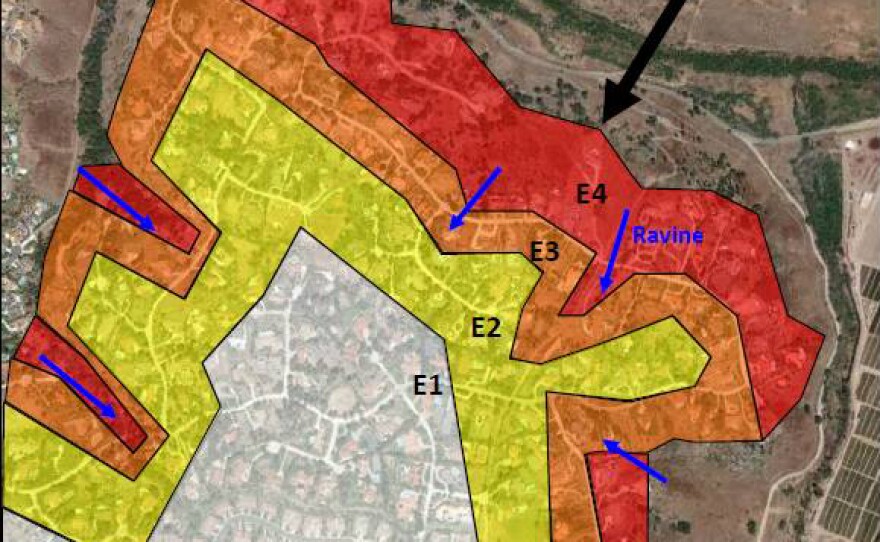Over the last decade wildfires have destroyed about 3,000 homes a year, according to the International Code Council, a safety advisory group. Federal researchers are developing a way to measure the destructiveness of a wildfire in an attempt to help build more fire-resistant communities.
Just as there are tools to measure earthquakes, tornadoes and hurricanes, the Wildland Urban Interface Hazard Scale assesses the intensity of a fire. The gauge measures three factors: topography, fuel (trees and shrubs) and weather (mostly ember carrying winds). The scale ranges from E1 to E4, with E4 being a location’s highest exposure to embers or fire.

“What our researchers wanted to do was to come up with a way that you could assess the risk from fire and embers to individual structures and to communities as a whole so you could make standards and codes that would allow you to build structures that were more resistant to wildfires,” said Michael Newman, a spokesman for the National Institute of Standards and Technology.
They researchers are testing the scale on recent destructive fires in the Southwest. They hope to make it available to communities in the next five years.







